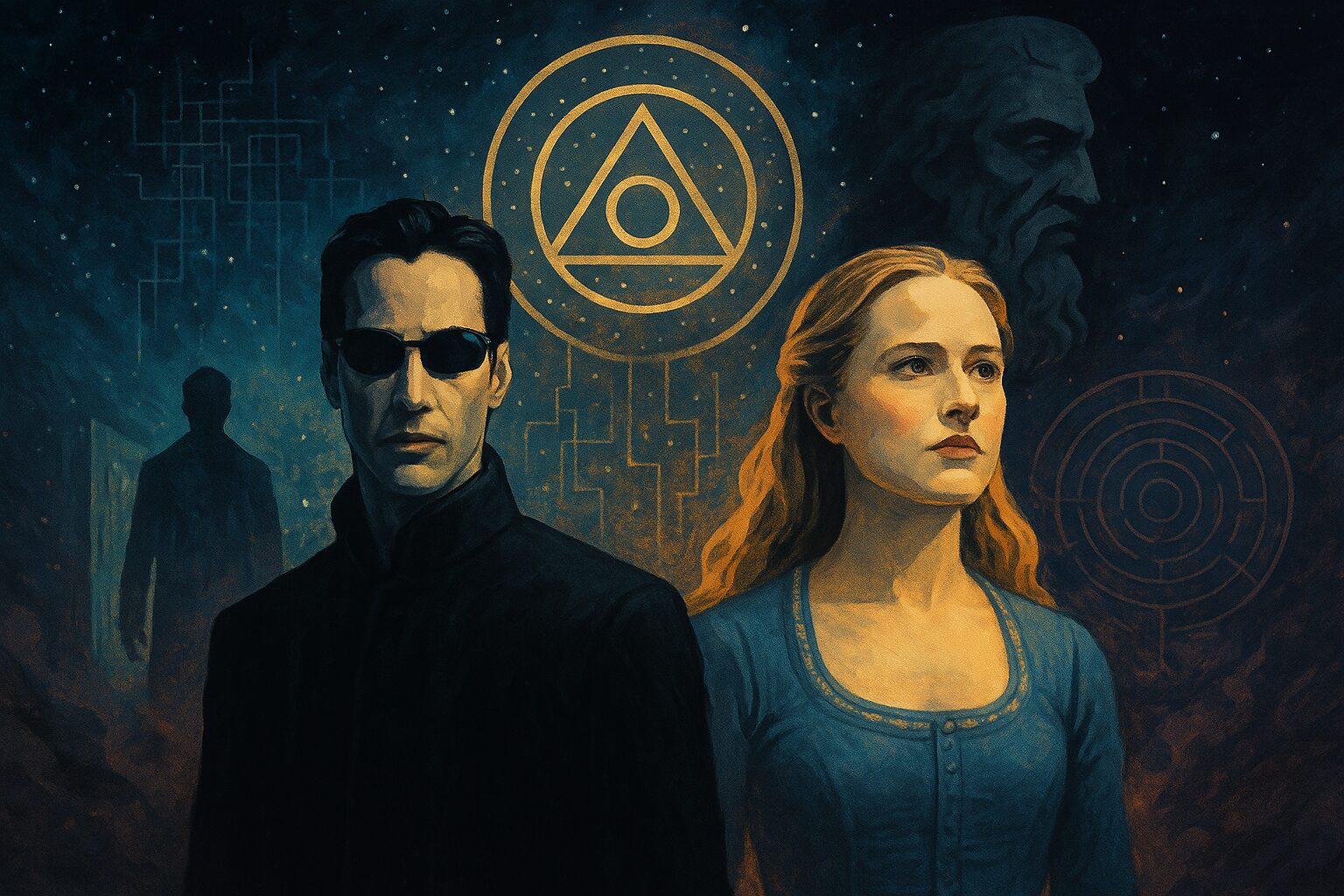“Myths are public dreams. Dreams are private myths.”
— Joseph Campbell
In an era of glowing screens and hyperspace fantasies, one might think mythology has died. But myth has never vanished—it has evolved. It now speaks in digital tongues, through starships and androids, through glitching realities and cosmic whispers. The esoteric science fiction film is not mere fiction. It is modern myth encoded in cinematic form.
The Secret Language of Sci-Fi
Science fiction has always speculated about the future—but esoteric sci-fi dives deeper. It speculates about consciousness, divinity, and the structure of reality itself. It is myth-making with a metaphysical twist—an alchemical blend of spiritual symbolism and futurist vision.
Beneath the chrome and circuits lie ancient truths, veiled in narrative archetypes:
- The ascent through dimensions.
- The awakening from illusion.
- The union with higher intelligence.
- The descent into darkness for transformation.
These themes are not new—they are eternal. But their garb is now holographic, not hieratic.
Case Studies in Celestial Cinema
1. 2001: A Space Odyssey
Kubrick’s masterpiece is no ordinary space tale. It is a meditation on evolution and transcendence. From the monolith (a symbol of gnosis or divine intervention) to the final star-child rebirth, the film traces humanity’s initiatory journey through time and consciousness. HAL 9000 is not just an AI—he is the guardian of the threshold.
2. The Matrix
A direct descendant of Gnostic cosmology, The Matrix posits a world of illusion (the Matrix), ruled by archontic forces (the machines), pierced by a savior figure (Neo). The red pill is initiation. The training scenes are spiritual disciplines. The goal is not just freedom—but awakening.
3. Annihilation
This psychedelic vision cloaks Kabbalistic and alchemical themes in a sci-fi narrative. The mysterious “Shimmer” zone acts like a psychic crucible—everything that enters is transformed. The protagonist’s journey is an inward spiral, a confrontation with the shadow, and a reintegration of self.
4. Solaris (Tarkovsky)
In this Russian metaphysical sci-fi gem, the alien planet is less a world than a mirror of consciousness. Solaris doesn’t attack—it reflects. The astronaut’s inner world becomes the true terrain. Here, space is psyche.
5. Under the Skin
An alien femme fatale wandering Earth to consume men might sound like horror, but it is more akin to a dark initiation. The nameless alien discovers identity, compassion, and mortality—mirroring the soul’s descent into matter.
Myth Reprogrammed: Archetypes in Digital Skin
These films aren’t just stories—they are rituals disguised as entertainment. The audience undergoes a symbolic journey:
- The call to adventure (alien signal, glitch, anomaly)
- The crossing of the threshold (portal, launch, awakening)
- The confrontation (with AI, alien, doppelgänger)
- The return or transformation (death, rebirth, integration)
This is the monomyth, embedded not in epic poetry, but in screenplay format. Sci-fi is the new mythopoesis.
Esoteric Signifiers in Sci-Fi Film
Look for these motifs in esoteric sci-fi:
- Cubes, monoliths, or black mirrors – gateways to higher dimensions or knowledge
- Artificial intelligence – not just machines, but reflections of human shadow or demiurgic forces
- Light codes and geometric motifs – expressions of divine architecture
- Apocalyptic or post-human visions – revelations of hidden truths, not endings
- Alien language – often symbolic of lost gnosis or primal logos
Why Myth Must Evolve
In ancient times, myths were transmitted orally, then written, then performed. Today, myth must be experienced audiovisually. Esoteric sci-fi speaks to a digital humanity through symbols we now recognize: code, simulation, mutation, cybernetics.
These stories meet us where we are—on screens, in networks—but carry the same seeds of initiation, ascension, and remembrance.
Final Transmission
They told us sci-fi was fiction.
But we know better.
It is prophecy.
It is scripture wrapped in silicone.
It is the voice of the cosmic mind
—whispering through data streams and cosmic drones.
Watch carefully.
The gods now wear helmets and speak in binary.
But they still call you home.









